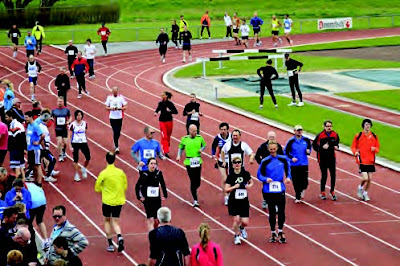What Is Exercise Physiology and Why Study It?. The events and changes described above exemplify concerns in the broad area of exercise physiology, that is, athletic performance, physical fitness, health, and rehabilitation. Exercise physiology can be defined as both a basic and applied science that describes, explains, and uses the body’s response to exercise and adaptation to exercise training to maximize human physical potential.
No single course or textbook, of course, can provide all the information a prospective professional will need. However, knowledge of exercise physiology and an appreciation for practice based on research findings help set professionals in the field apart from mere practitioners. It is one thing to be able to lead yoga routines.
Learning Outcome from Study Exercise Physiology
It is another to be able to design routines based on predictable short- and long-term responses of given class members, to evaluate those responses, and then to modify the sessions as needed. To become respected professionals in fields related to exercise science and physical education, students need to learn exercise physiology in order to:
- Understand how the basic physiological functioning of the human body is modified by various types of exercise as well as the mechanisms causing these changes. Unless one knows what responses are normal, one cannot recognize an abnormal response or adjust to it.
- Understand how the basic physiological functioning of the human body is modified by various training programs and the mechanisms responsible for these changes. Adaptations will be specific to the training program used.
- Provide quality fitness programming and physical education programs in schools that stimulate children and adolescents both physically and intellectually. To become lifelong exercisers, individuals need to understand how physical activity can benefit them, why they take physical fitness tests, and what to do with fitness test results.
- Apply the results of scientific research to maximize health, rehabilitation, and/or athletic performance in a variety of subpopulations.
- Respond accurately to questions and advertising claims, as well as recognize myths and misconceptions regarding exercise. Good advice should be based on scientific evidence.

Figure 1
Acknowledge
Just as the fitness participant, athlete (Figure 1), or even musician warm up before working out, competing, or performing, this chapter is intended to provide you, the learner, with an essential warm-up for the rest of the text. That is, it provides the basic information that will prepare you to successfully understand what follows in the text and accomplish the goals stated above.
To do this, the textbook is first divided into four units: metabolic system, cardiovascular-respiratory system, neuromuscular-skeletal system, and neuroendocrine-immune system. To facilitate learning, each unit follows a consistent format:
1. Basic information
a. Anatomical structures
b. Physiological function
c. Laboratory techniques and variables typically measured
2. Exercise responses
3. Training
a. Application of the training principles
b. Adaptations to training
4. Special applications, problems, and considerations
Each unit first deals with basic anatomical structures and physiological functions necessary to understand the material that follows. Then each unit describes the acute responses to exercise. Following are specific applications of the training principles and discussion of the typical adaptations that occur when the training principles are applied correctly.
Finally, each unit ends with one or more special application topics, such as thermal concerns, weight control/body composition, and osteoporosis. This integrated approach demonstrates the relevance of applying basic information.
Source: Exercise Physiology For Health, Fitness, and Performance. p 2-3. Sharon A. Plowman and Denise L. Smith.
